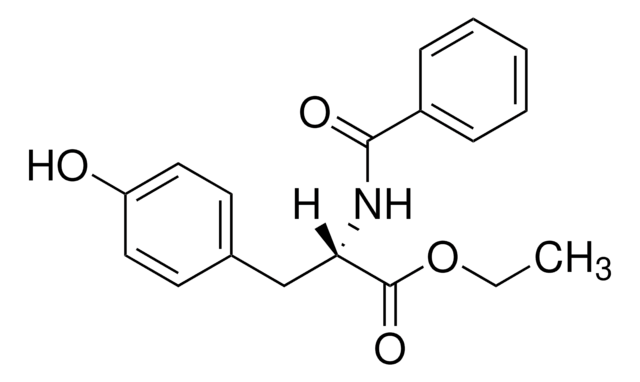Wichtige Dokumente
M1775
Methanol
Absolute - Acetone free
Synonym(e):
Methylalkohol
About This Item
Empfohlene Produkte
Dampfdichte
1.11 (vs air)
Dampfdruck
410 mmHg ( 50 °C)
97.68 mmHg ( 20 °C)
Form
liquid
solution
Selbstzündungstemp.
725 °F
Expl.-Gr.
36 %
Brechungsindex
n20/D 1.329 (lit.)
bp
64.7 °C (lit.)
mp (Schmelzpunkt)
−98 °C (lit.)
Dichte
0.791 g/mL at 25 °C (lit.)
Format
neat
SMILES String
CO
InChI
1S/CH4O/c1-2/h2H,1H3
InChIKey
OKKJLVBELUTLKV-UHFFFAOYSA-N
Suchen Sie nach ähnlichen Produkten? Aufrufen Leitfaden zum Produktvergleich
Allgemeine Beschreibung
Anwendung
- To prepare methanolic uranyl acetate solution that may be utilized as a stain for tissues.
- In the synthesis of 4-nitro-N-(quinolin-8-yl) benzenesulfonamide by microwave reaction.
Leistungsmerkmale und Vorteile
- Low freezing point.
- Miscible in water.
Sonstige Hinweise
Signalwort
Danger
H-Sätze
Gefahreneinstufungen
Acute Tox. 3 Dermal - Acute Tox. 3 Inhalation - Acute Tox. 3 Oral - Flam. Liq. 2 - STOT SE 1
Zielorgane
Eyes,Central nervous system
Lagerklassenschlüssel
3 - Flammable liquids
WGK
WGK 2
Flammpunkt (°F)
49.5 °F - closed cup
Flammpunkt (°C)
9.7 °C - closed cup
Hier finden Sie alle aktuellen Versionen:
Besitzen Sie dieses Produkt bereits?
In der Dokumentenbibliothek finden Sie die Dokumentation zu den Produkten, die Sie kürzlich erworben haben.
Kunden haben sich ebenfalls angesehen
Unser Team von Wissenschaftlern verfügt über Erfahrung in allen Forschungsbereichen einschließlich Life Science, Materialwissenschaften, chemischer Synthese, Chromatographie, Analytik und vielen mehr..
Setzen Sie sich mit dem technischen Dienst in Verbindung.







